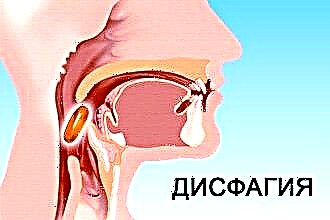The question of whether it is possible to warm the throat with angina has not yet found a definite answer. This is explained by the fact that, firstly, much depends on what type of angina is diagnosed in a particular patient - in some types of the disease, warming up is completely contraindicated. And secondly, this procedure has its pros and cons, and the predominance of benefit or harm will be individual for each patient. Let's take a closer look at the advantages and disadvantages of heating.
Positive effects
 The main effect that produces heat on our body is local vasodilation and increased blood flow in the heated area. This, in turn, leads to intense flushing of toxins. With angina, this effect is very useful, because harmful compounds are formed in inflamed tissues, and are also released during the life of bacteria.
The main effect that produces heat on our body is local vasodilation and increased blood flow in the heated area. This, in turn, leads to intense flushing of toxins. With angina, this effect is very useful, because harmful compounds are formed in inflamed tissues, and are also released during the life of bacteria.
In addition, intensive blood circulation provides an increased flow of elements of cellular and humoral immunity to this zone. This means that the fight against infection is intensified with the help of internal protective mechanisms.
Warming up expands not only blood vessels, but also lymphatic vessels. Thanks to this, it improves venous and lymphatic outflow, which leads to a decrease in the severity of edematous phenomena on the mucous membrane of the throat. As a result, all these changes in the complex lead to the fact that at the level of clinical symptoms, the patient feels noticeable relief. The intensity of the pain syndrome decreases, it becomes easier to swallow and speak.
Negative effects
All the disadvantages of warming the throat with angina are associated, in fact, with only one fact: heat is a good stimulator of the growth and reproduction of infectious agents. Namely, an infection (bacterial or, less often, viral) is the main cause of sore throat.
Therefore, the main contraindications for warming up the throat is the presence of a purulent component. The appearance of pus indicates a large number of pathogenic microorganisms in the affected area, and heat in this case will only intensify all manifestations of the disease. Moreover, the intensive multiplication of bacteria in favorable conditions significantly increases the risk of complications.
Important! Warming up with angina can be used only in the initial stages of the disease. When purulent elements appear, this procedure cannot be carried out.
Now that you yourself can decide whether to warm your throat for angina in your particular case, let's talk about exactly how this can be done.
Rinses
 In addition to delivering medicinal compounds to the site of injury, rinsing also plays the role of a heat carrier. Of course, warm solutions should be used for this. But almost all recipes for such liquids necessarily provide for their preheating.
In addition to delivering medicinal compounds to the site of injury, rinsing also plays the role of a heat carrier. Of course, warm solutions should be used for this. But almost all recipes for such liquids necessarily provide for their preheating.
Some of the more common options that will help you warm up your throat while you're on the medication include:
- Rinse and rinse with warm salt, iodine and soda solution. To prepare it, take 1 tsp for 1 cup of warm boiled water. common salt, 1 tsp. baking soda and 10-12 drops of iodine. Stir the solution thoroughly and make sure that the salt and baking soda are completely dissolved in it.
- Infusions and decoctions of medicinal herbs. There are a lot of recipes that include herbal remedies useful for angina. And if they are used for rinsing, and not for ingestion, then it is almost always recommended to use them in a heated form.
- Using solutions of honey or propolis. In this case, you will need to dissolve 1-2 tablespoons in hot water. light liquid honey or propolis. Gargle with this liquid to prevent heavy fractions from settling.
Important! Honey and bee products are highly allergenic substances! Make sure the patient is not allergic to them before using them.
Inhalation
The inhalation route of administration of drugs assumes that they will enter the throat in the form of steam. In this case, steam is obtained by strongly heating one or another solution, which means that in addition to the active compounds, heat will also enter the area affected by angina. As a basis for inhalation, you can use:
- herbal infusions and decoctions;
- essential oils (fir, lavender, etc.), which are preliminarily dissolved in hot water;
- chlorophyllipt is an antibacterial herbal preparation, which is an extract from eucalyptus leaves;
- a solution containing iodine with baking soda;
- hot potatoes, just boiled and mashed into a homogeneous mass, etc.
Warm drink
This is perhaps the easiest way to warm up your throat. After all, hot drinks will pass through it and, of course, give their warmth to the surrounding tissues. Moreover, with angina, patients are shown an intensive drinking regimen. A large amount of fluid helps to remove toxins and cellular debris from the body, helps to reduce body temperature, and prevents dehydration. And at the same time it helps to warm up the throat.
As such a hot drink, you can use:
- tea with lemon, honey, with various types of jam (for example, raspberry, which has a strong diaphoretic effect);
- honey dissolved in hot milk;
- decoctions of medicinal plants, such as rose hips, calendula and sage flowers, coltsfoot leaves, chamomile;
- hot broths and compotes, etc.
Compresses
 When using all of the above methods, warming up the throat was, so to speak, an additional bonus. The main point of these procedures was the delivery of drugs to the affected areas of the throat. The compress, on the other hand, has heating as its main purpose.
When using all of the above methods, warming up the throat was, so to speak, an additional bonus. The main point of these procedures was the delivery of drugs to the affected areas of the throat. The compress, on the other hand, has heating as its main purpose.
Most often, compresses are prepared on the basis of vodka or ethyl alcohol diluted with water. Warming up with their help should be done like this:
- Take a soft, dense fabric made from natural materials, immerse it in vodka or ethanol, wring it out and attach it to your throat. Try not to cover the thyroid area.
- Cover the top of the fabric with a piece of plastic wrap that is larger than the first layer of the compress in both length and width.
- A thick layer of cotton wool, woolen cloth or a terry towel should be placed on the film.
- And finally, on top of everything, secure the compress around your neck with a long woolen scarf or large shawl.
The warming effect is achieved here due to the irritating effect of ethanol on the skin. The second layer acts as an insulator, preventing the alcohol from evaporating too quickly. The third layer - cotton wool or wool - retains body heat, and the fourth one fixes the compress and performs an additional heat-saving function.
Important! Compresses should not be used if the patient's body temperature exceeds 38 ° C.
Infrared radiation
 Popularly, a device that generates infrared rays is also called a "blue lamp" because of the characteristic color of the lamp bulb and the shade of the light produced. In fact, the color of the lamp does not really matter here. It was chosen solely for the reason that warming up the bridge of the nose is the least irritating to the eyes. But with the same success, this device can be used for angina. In this case, thermal radiation is produced by an ordinary lamp and, with the help of a reflector, is reflected on the heated area of the throat.
Popularly, a device that generates infrared rays is also called a "blue lamp" because of the characteristic color of the lamp bulb and the shade of the light produced. In fact, the color of the lamp does not really matter here. It was chosen solely for the reason that warming up the bridge of the nose is the least irritating to the eyes. But with the same success, this device can be used for angina. In this case, thermal radiation is produced by an ordinary lamp and, with the help of a reflector, is reflected on the heated area of the throat.
The blue lamp is quite comfortable to use and produces an even, soft heat that, if handled correctly, will not cause burns.But, unfortunately, not everyone has such a device, and sometimes it is not so easy to buy it in a pharmacy. This is primarily due to the low popularity of blue lamps in the treatment of angina.
Warming up the rest of the body
Warm with angina should not only the throat. It is important to keep your feet warm as well. This will reduce heat loss throughout the body. In addition, frozen feet are a direct path to hypothermia, which often gives the first impetus to the appearance of sore throat. A low temperature lowers the activity of the immune system, which leads to an increased risk of developing a wide variety of infections.
With an already existing disease, you can put mustard plasters on your legs - they will cause blood flow to the limbs and reflex warming of the whole body. And if you have just returned from the street and your feet are wet and cold, then we recommend taking a hot foot bath - this will be an excellent prevention of any colds, as well as inflammatory lesions of the tonsils.



